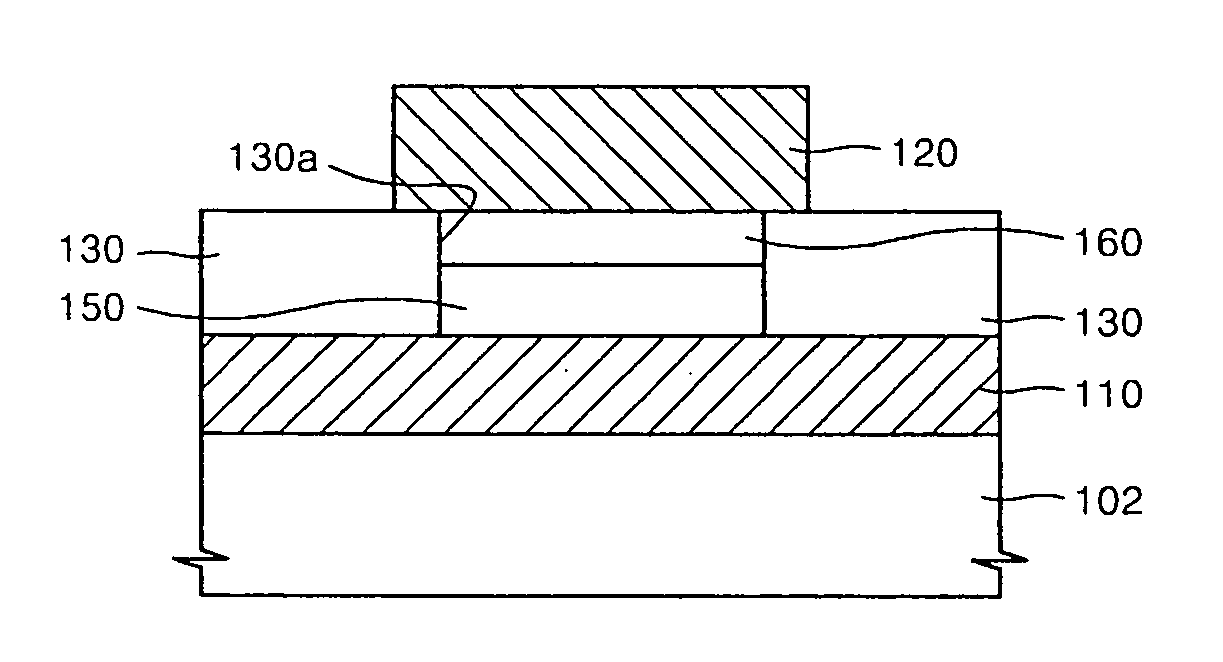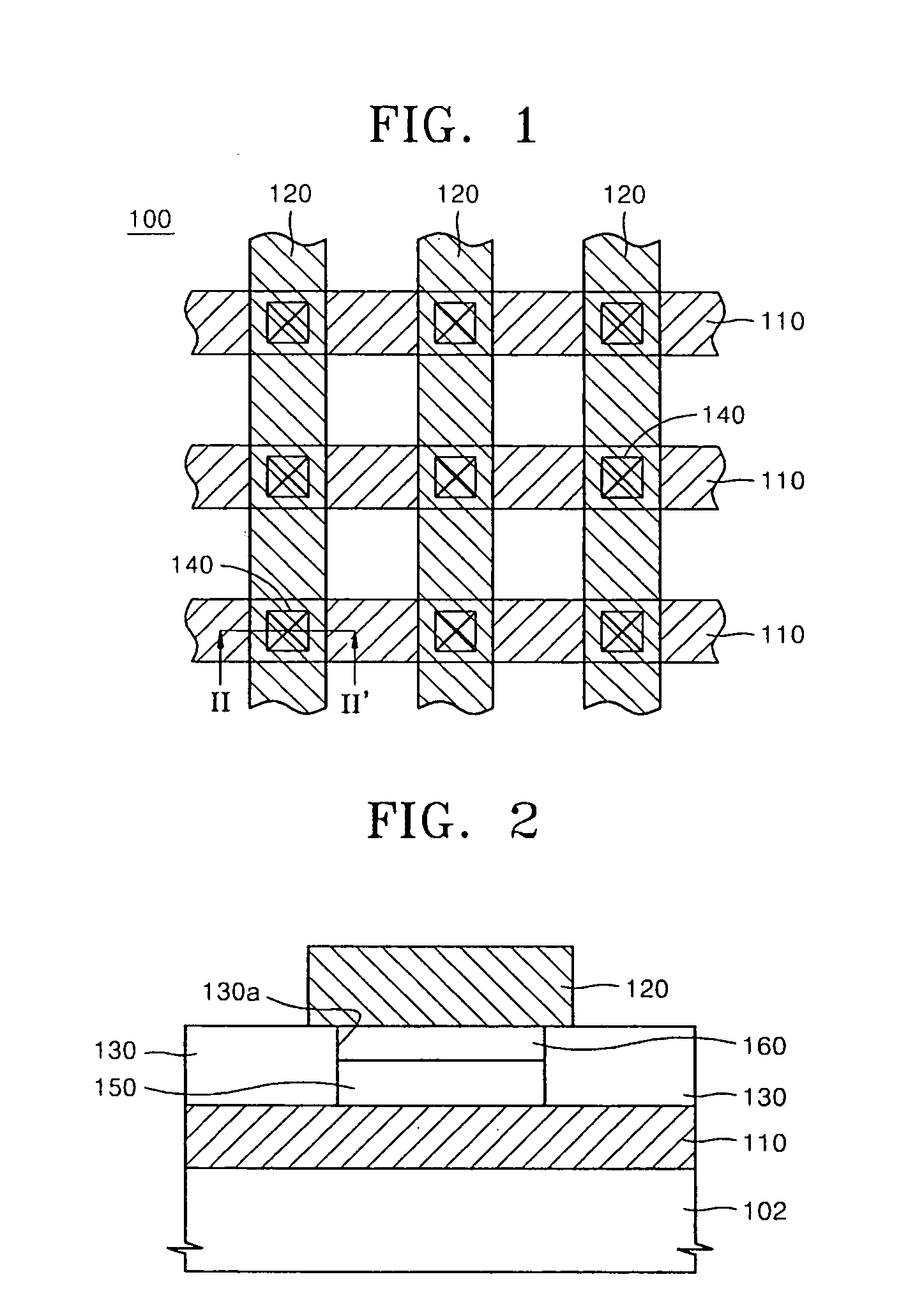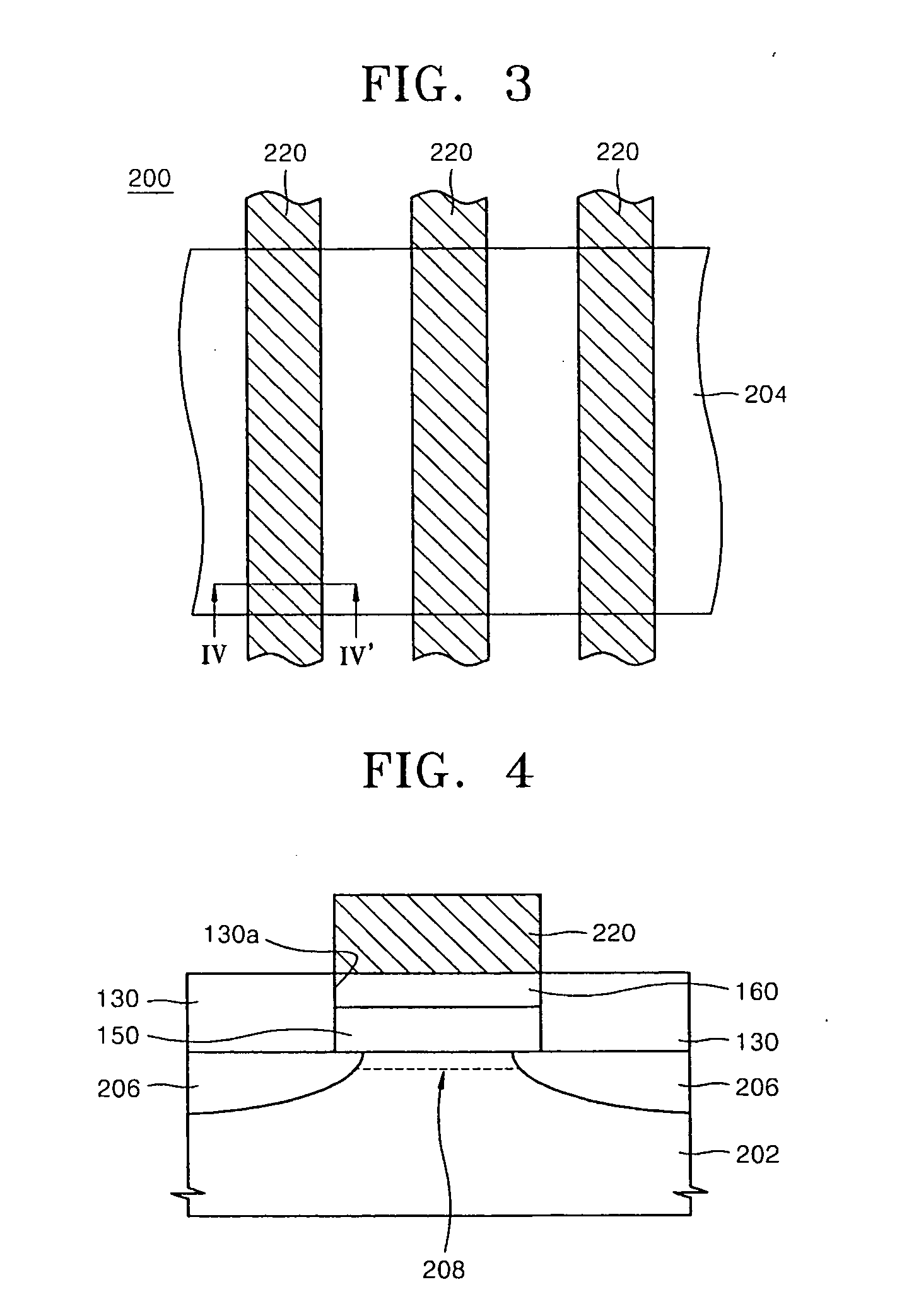Molecular electronic device including organic dielectric thin film and method of fabricating the same
a technology of electronic devices and thin films, applied in solid-state devices, nanoinformatics, instruments, etc., can solve problems such as difficult commercialization of such electronic devices, and achieve the effect of preventing short circuits
- Summary
- Abstract
- Description
- Claims
- Application Information
AI Technical Summary
Benefits of technology
Problems solved by technology
Method used
Image
Examples
example 1
Fabrication of Molecular Electronic Device
[0110]A. Fabrication of Bottom Electrode and Organic Dielectric Thin Film
[0111]An insulation layer was formed on a silicon substrate. The insulation layer was formed of silicon oxide. A plurality of bottom electrodes were formed on the insulation layer. As similar to the bottom electrodes 110 illustrated in FIG. 1, the bottom electrodes were formed in line-type patterns. A line width of each of the bottom electrodes was about 50 nm. The bottom electrodes were formed by first coating a photoresist material on the insulation layer using a spin coating method and imprinting the photoresist material to form a mask pattern using a stamp. A Ti layer and an Au layer were sequentially deposited using an electron beam deposition method. The Ti layer and the Au layer were formed to thicknesses of about 5 nm and about 30 nm, respectively. The mask pattern was removed. In the current embodiment, the bottom electrodes were formed using a nano-imprinting ...
example 2
Verification of Self-Assembled Organic Dielectric Thin Film on Electrode
[0119]According to an embodiment of the present invention, when an organic dielectric thin film including amine alkylthiol-containing double molecular layers was formed on an electrode formed of Au, a sample including an Au layer was immersed into DMF solution to verify whether the organic dielectric thin film was formed on the surface of the Au layer (i.e., electrode). Amine alkylthiol (HS(CH2)11NH2) was injected into the DMF solution so that the concentration of amine alkylthiol was about 0.1 mM within the DMF solution, and a self-assembly rate of the amine alkylthiol on the surface of the Au layer was observed using a quartz crystal microbalance (QCM).
[0120]FIG. 8 illustrates a graph of amounts of the amine alkylthiol adsorbed onto the surface of the Au layer with respect to time using the QCM.
[0121]In FIG. 8, “I” indicates a moment at which the amine alkylthiol was injected into the DMF solution into which t...
example 3
Fabrication of Molecular Electronic Device Including Organic Dielectric Thin Film with Single Molecular Layer Structure
[0122]As comparison, an organic dielectric thin film with a single molecular layer was formed on an Au layer, and a molecular active layer chemically bound to the organic dielectric thin film to thereby fabricate a molecular electronic device. The organic dielectric thin film with the single molecular layer was obtained by self-assembling a compound of HS(CH2)2NH2 on the Au layer, and chemically binding an active material including a dying agent, such as Rose bengal, to the organic dielectric thin film so as to form the molecular active layer.
PUM
 Login to View More
Login to View More Abstract
Description
Claims
Application Information
 Login to View More
Login to View More - R&D
- Intellectual Property
- Life Sciences
- Materials
- Tech Scout
- Unparalleled Data Quality
- Higher Quality Content
- 60% Fewer Hallucinations
Browse by: Latest US Patents, China's latest patents, Technical Efficacy Thesaurus, Application Domain, Technology Topic, Popular Technical Reports.
© 2025 PatSnap. All rights reserved.Legal|Privacy policy|Modern Slavery Act Transparency Statement|Sitemap|About US| Contact US: help@patsnap.com



